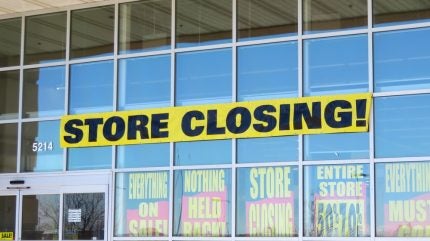
Store closures in the retail industry have surged to unprecedented levels in 2025, reshaping the face of high streets and shopping centres on both sides of the Atlantic.
Major chains like Poundland, Claire’s UK, Hamleys and Nordstrom are just the latest to announce large‑scale shutdowns.

Access deeper industry intelligence
Experience unmatched clarity with a single platform that combines unique data, AI, and human expertise.
What began as a ripple in physical retail has become a tidal wave—driven by economic headwinds, shifts in consumer behaviour and changing business models.
Growing pressure on high street retailers
Discount chain Poundland is cutting around 68 stores UK‑wide under new owners Gordon Brothers, aiming to shrink its network from roughly 800 locations to about 650–700. That restructuring may also involve closures of distribution centres and higher‑rent negotiations across hundreds more outlets.
The Centre for Retail Research estimates 17,350 store closures and over 200,000 job losses in the UK during 2025.
Claire’s UK, the high street accessories retailer, is battling mounting debts of around £355 million and operating losses of £25 million over three years. It has engaged advisers to explore rescue plans, raising the spectre of mass closures if the UK arm fails to turn around.

US Tariffs are shifting - will you react or anticipate?
Don’t let policy changes catch you off guard. Stay proactive with real-time data and expert analysis.
By GlobalDataHamleys, the storied toy retailer, is silencing 29 UK stores amid underwhelming profits and declining international revenue, even as it seeks to bolster its digital strategy and visitor experiences.
In the US, Nordstrom plans to shut its malls in St Louis and Santa Monica by August 2025. The closures reflect broader consolidation in luxury retail, as Macy’s and JCPenney also scale back operations in response to economic trends and e‑commerce pressure.
A broader trend: why store closures are accelerating
Industry analysts anticipate over 15,000 store closures across the US in 2025, more than double the previous year, with more than 120 million square feet of retail space vacated so far—versus just 74.5 million opened.
In the UK, the curve follows similar patterns, with legacy chains closing locations alongside independent outlets.
Several factors fuel this shift:
- soaring costs—from energy and logistics to employer National Insurance—are squeezing margins
- consumer habits are pivoting decisively online, with discount platforms such as Temu and Shein undercutting traditional pricing
- retailers burdened by heavy debt or outdated property footprints struggle to adapt.
Despite talk of a “retail apocalypse”, experts emphasise that physical retail is evolving rather than disappearing. Chains like Walmart and Target continue to thrive by investing in omnichannel platforms, experiential retail and efficient operations.
What it means for shoppers, towns and businesses
For shoppers, widespread store closures can reduce convenience, especially in smaller towns. In the US, location losses may even create “retail deserts” where travel of up to 20 miles becomes necessary for everyday shopping.
For towns and retail centres, closures bring opportunity as well as challenge. Empty units can depress local economies—but also offer lower‑cost rental space.
Smaller independent retailers or niche businesses may step in, provided they offer distinctive local service or experiences.
Retailers still thriving are those embracing change—offering click‑and‑collect, immersive in‑store experiences, loyalty programmes and personalised service.
Those adapting quickly can capture customers amid a shifting landscape.




